Technology
Get the Galaxy Watch Ultra for as low as $250
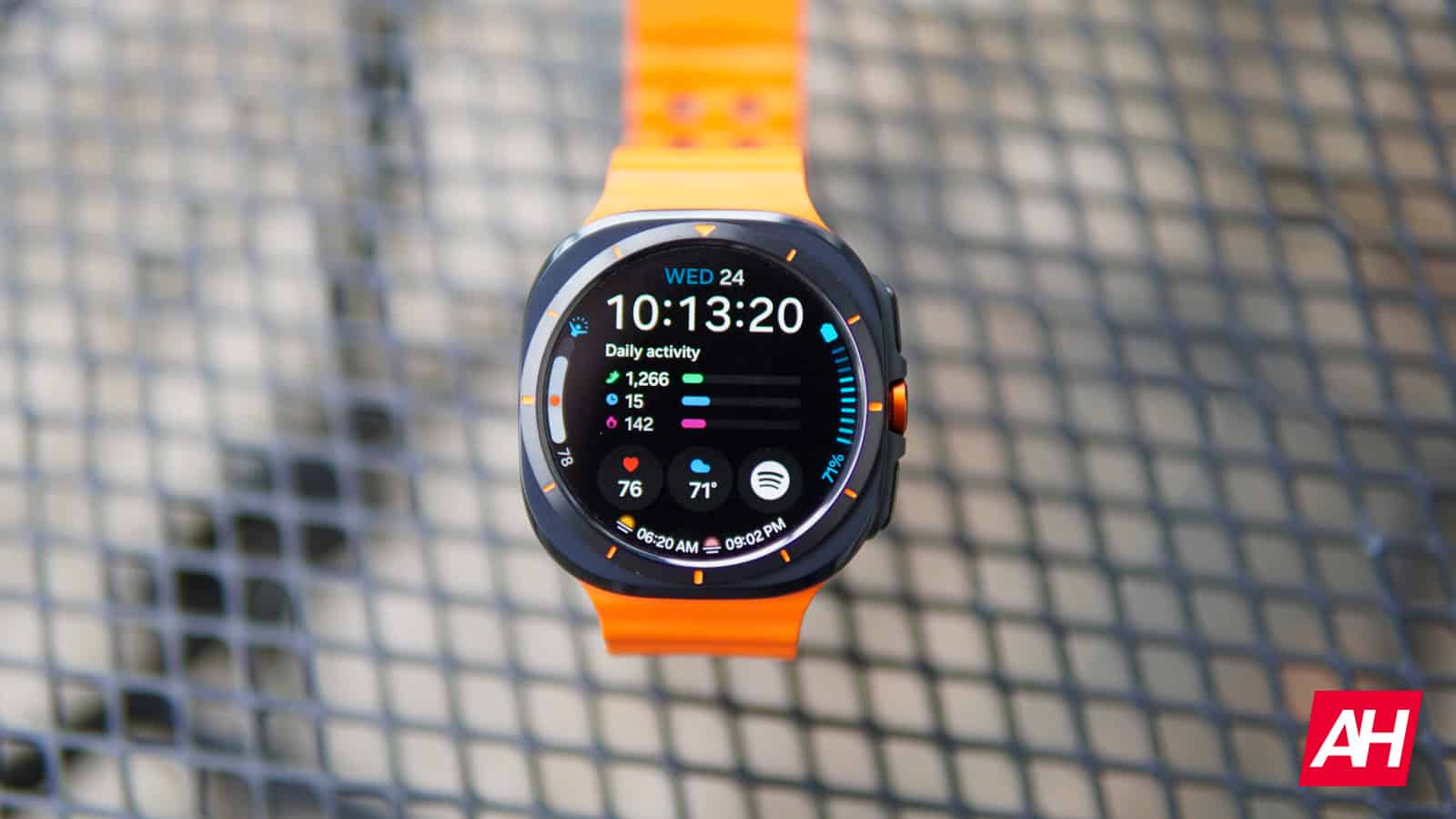
Samsung’s Galaxy Watch Ultra is perhaps the best smartwatch available for outdoor enthusiasts who use an Android device, and right now you can pick it up for a pretty good price thanks to Samsung’s current deal on the watch. Normally the Galaxy Watch Ultra would cost you $649.99 if you were paying full price, but at the moment you can get the watch for as low as $250.
There are some caveats to this super low price though. Right off the bat you get a $50 discount as Samsung has the watch on sale for $599.99. On top of this, you can save up to another $350 with an immediate trade-in credit. So you won’t be guaranteed to get the Galaxy Watch Ultra for $250. That price is dependent on what the value for your trade-in device is. That being said, any trade-in credit is going to save you money on the Galaxy Watch Ultra purchase and that money will be deducted from the total end cost of the watch at checkout.
All-in-all, a great deal, and really the best price we’ve seen for the watch since it was launched. Samsung’s Galaxy watch Ultra has plenty of awesome features but one that really stands out from other Wear OS smartwatches is the Quick Button on the right-hand side. With this button you can assign any number of actions you can think of and quickly launch into that function with a single press. So it’s all about convenience.
The Galaxy Watch Ultra is a bigger watch with a noticeably heavier weight compared to the Galaxy Watch 7, though. So that’s worth keeping in mind. However, the Galaxy Watch Ultra was also built to be rugged, and has a titanium case. So it will stand up better to dings and such.
Technology
The Ayaneo 3 looks to be an improvement in nearly every way
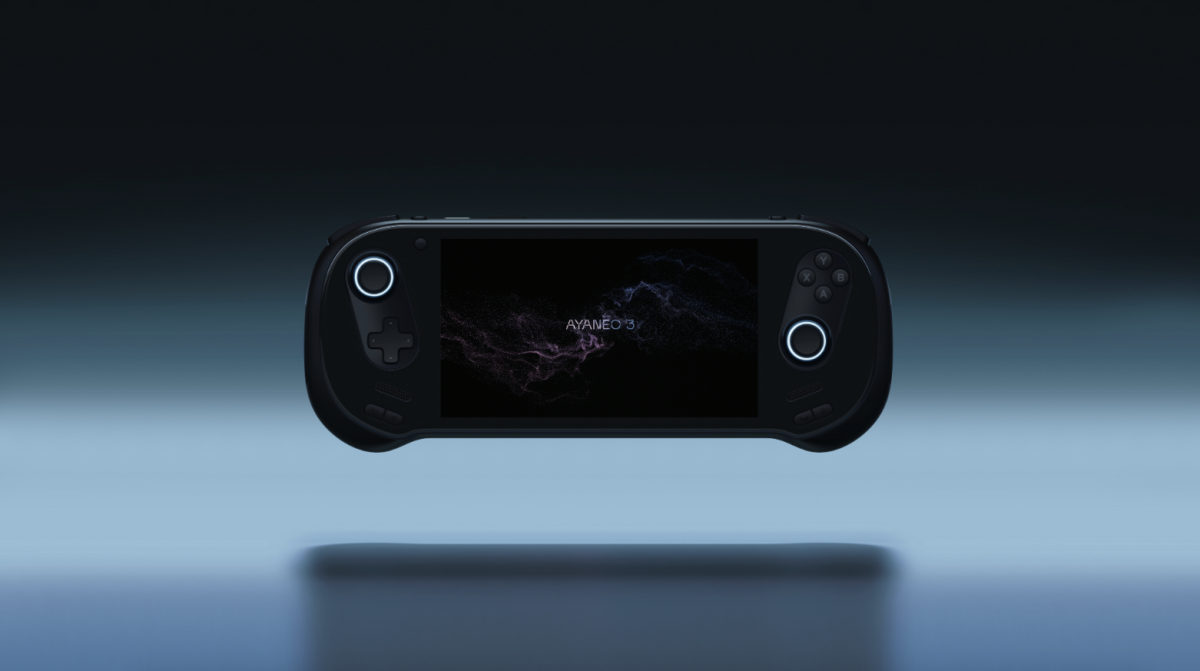
There’s a new portable gaming console in town, joining an ever-crowded field. The Ayaneo 3 is the manufacturer’s latest portable device, following last year’s Ayaneo 2S. This Windows-based handheld looks to be an improvement in nearly every major way over its predecessors.
The Ayaneo 3 will be available in a few different versions. Purchasers can choose between two processors, an AMD Ryzen AI 9 HX 370 or Ryzen 7 8840U. The HX 370 is the more powerful option, offering an “extraordinary handheld gaming experience with AI support.” It’s worth noting that the 8840U should still be able to run plenty of modern games, as the company says it’s a good choice for “gamers who prefer classic powerful performance.”
Folks can also select between two display options. There’s a model with a serviceable 7-inch LCD screen and another with a 7-inch OLED. Portable devices really pop with OLED screens.
Every model boasts a new back button design, to provide for a “richer button combination experience.” The company says the design has been “ergonomically optimized” so human fingers can easily reach those back buttons. There’s also a trigger lock feature, to offer enhanced “control in both popular and retro games.” Otherwise, the front-facing buttons and slanted joystick layout are familiar.
The front-facing speakers have received a refresh here, with Ayaneo promising “immersive audio beyond expectations.” It says they were designed in “deep collaboration with sound specialists” and will offer “low rumble” and “depth and clarity.”
That’s about all we know for now. Ayaneo says it’ll release more information soon, including new features and “more control innovations.” There’s no price yet and no release date.
Science & Environment
Fintechs Upstart and Toast soar on earnings
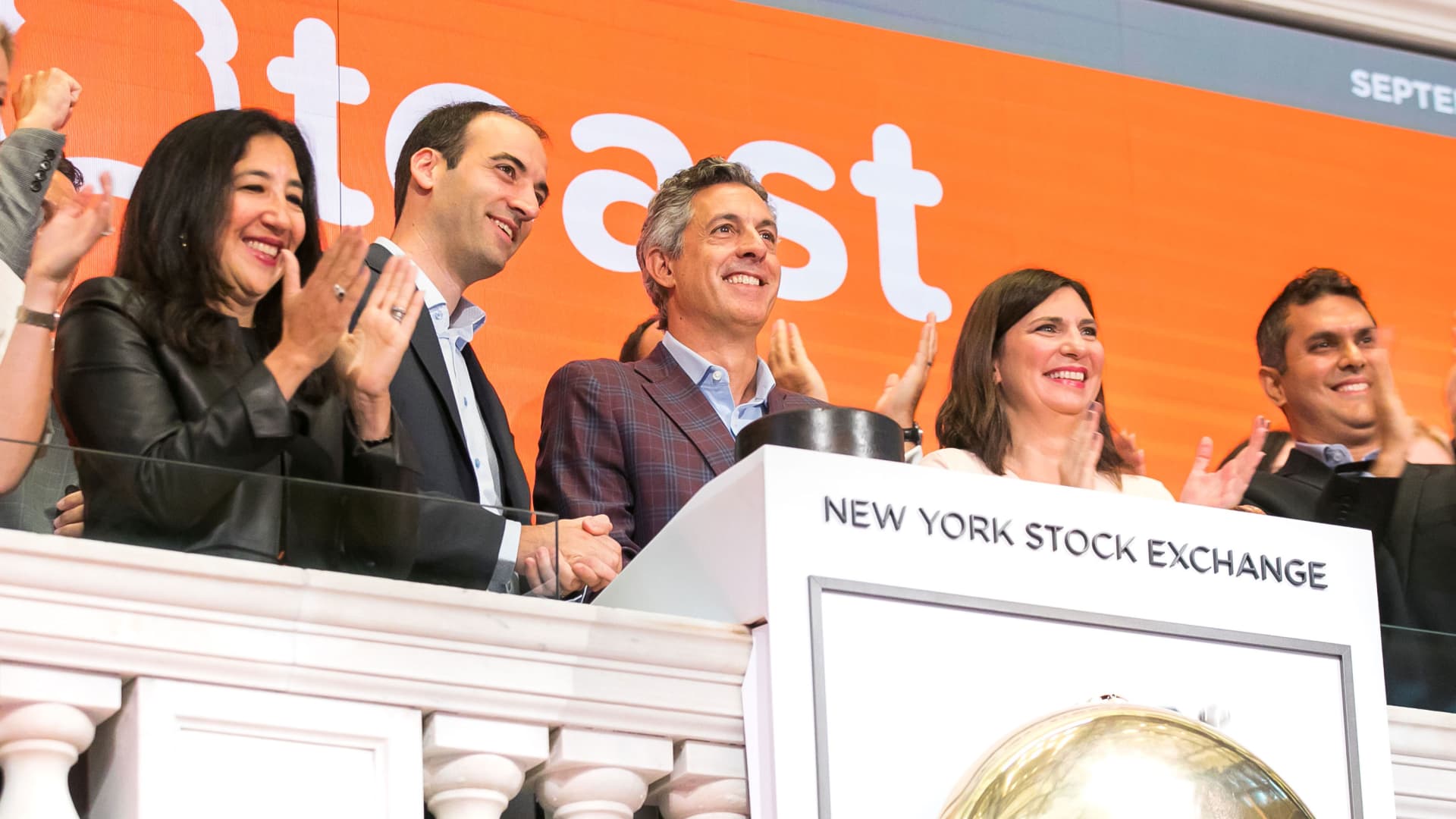
Chris Comparato, CEO, the Toast, Inc. IPO at the New York Stock Exchange, on September 22, 2021.
Source: NYSE
Upstart, which uses artificial intelligence to inform online lending decisions, soared 46% on Friday, its best day in over three years. Toast, which sells payments technology to restaurants, jumped 14%, closing at its highest since 2021.
Both companies reported better-than-expected results, sparking the rallies.
Upstart’s revenue jumped 20% in the third quarter to $162 million, easily beating analyst estimates. CEO David Girouard said on the company’s earnings call that, “we’re in growth mode.”
Toast is still well off its pandemic highs of 2021, but the stock has now more than doubled this year. The company’s adjusted earnings forecast of $90 million to $100 million for the current quarter sailed past estimates.
The two stocks were part of a huge rally on Wall Street this week that followed Donald Trump’s election victory on Tuesday night. All three major indexes closed at records, with the tech-heavy Nasdaq finishing the week up 5.7%, its second-best week of the year.
Within fintech, companies tied to crypto were some of the top performers, after candidates funded by the crypto industry won races up and down the ballot.
Coinbase shares jumped 48% for the week, their strongest performance since January 2023. Coinbase was one of the top corporate donors in the election cycle, giving more than $75 million to Fairshake and its affiliate PACs, including a fresh pledge of $25 million to support the pro-crypto super PAC in the 2026 midterms.
Trump has vowed to oust SEC Chair Gary Gensler, which potentially bodes well for companies like Coinbase fighting the regulator in court over alleged securities offenses.
Robinhood, which allows users to buy and sell a number of digital currencies, rose 27% for the week. The online brokerage received a Wells Notice from the SEC in May, a move that often precedes formal charges.
Bitcoin hit a new intraday high above $77,300, ending the week 11% higher. Ether, solana, and dogecoin outpaced bitcoin’s gains.
Not all fintechs rallied.
Block, the parent company of Square, reported third-quarter revenue on Thursday that trailed Wall Street’s expectations, leading to a slight drop in the stock on Friday. Shares of Jack Dorsey’s company underperformed the boarder tech market for the week, rising 3.3%.
Affirm, the provider of buy now, pay later loans, beat on the top and bottom line, but the stock still dropped 4.7% on Friday, leaving it slightly ahead of the Nasdaq for the week.
WATCH: Robinhood Crypto general manager reacts to bitcoin rally

Technology
Identity management in 2025: 4 ways security teams can address gaps and risks


The majority of businesses, 90%, have experienced at least one identity-related intrusion and breach attempt in the last twelve months.Read More
Technology
Monarch Tractor lays off 10% in restructuring towards software and licensing AV tech
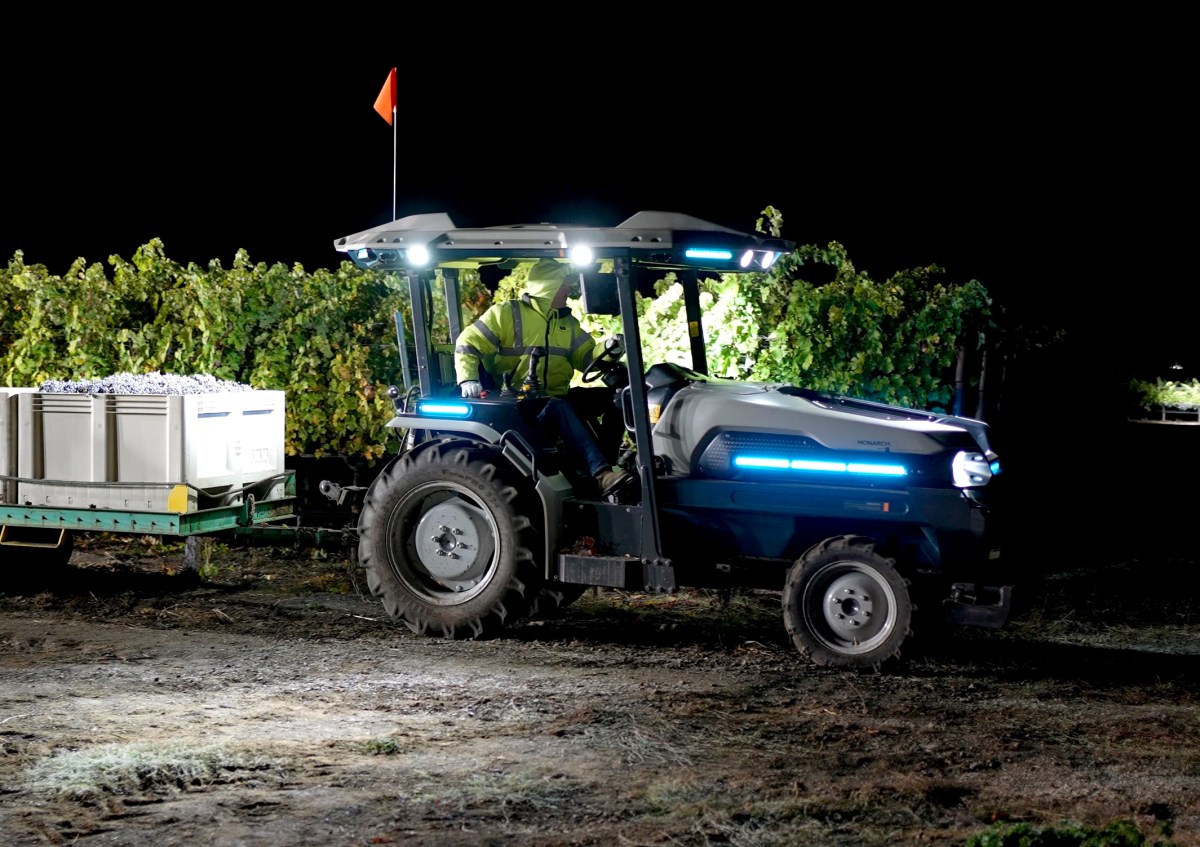
Monarch Tractor has laid off around 10% of its workforce as part of a restructuring that will see it prioritize non-agricultural customers, license its autonomous technology, and boost sales of its AI-powered farm management software, TechCrunch has learned.
Around 35 employees were cut this week by the Livermore, California-based autonomous electric tractor startup that has raised a total of $220 million since it was founded in 2018. Some Monarch workers told TechCrunch they were let go without severance. It’s the second cut this year; Monarch previously laid off around 15% of its workforce in July.
CEO Praveen Penmetsa told TechCrunch in an interview the company decided to restructure after a slower-than-expected third quarter, and despite raising $133 million in July from the likes of Foxconn and agri-food tech impact firm Astanor. Penmetsa said he was uncertain if employees were let go without severance, but that the company has been trying to help out laid-off workers on a case-by-case basis.
“All of this happened pretty quickly,” Penmetsa said, referring to the recent crash of California’s vineyards, which made up a bulk of Monarch’s early customers. That development, plus an ongoing pullback in agri-tech investing, left Penmetsa and his team looking at other options.
“The industry has slowed down on acquisition of new equipment and new solutions, especially in the core farming sectors,” Penmetsa said. “But in the meantime, as a platform company, we also have some very exciting non-agriculture opportunities that started sprouting because of our success in ag.”
He said the company, which has shipped 500 tractors to date, is now focused on widening its customer base in a number of ways. It is expanding beyond agricultural customers to golf courses, solar farms, and even municipalities. It’s also putting more focus on selling its “WingspanAI” farm management software. And Monarch is in talks with other “off-road” vehicle companies to license its autonomous technology.
Penmetsa said these changes inspired the cuts which hit, among other things, some of Monarch’s engineering and operations team. He also said that Monarch is leaning more on contract-manufacturer Foxconn, which builds the tractors at its Lordstown, Ohio facility, for operational roles.
“We are a startup,” Penmetsa said. “You have to be agile, right?”
Technology
The Beatles’ final song, restored using AI, is up for a Grammy

The Beatles have been nominated for two Grammys — nearly 50 years after the band officially split up. Their final song, called “Now and Then,” was restored last year with the help of AI, and is now up for record of the year alongside the likes of Beyoncé, Charlie XCX, Billie Eilish, and Taylor Swift. It’s also been nominated for best rock performance, where it goes up against Green Day, Pearl Jam, and The Black Keys.
However, “Now and Then” was never released, as technology at the time couldn’t separate John’s vocals and piano to get a clear sound. But in 2021, filmmaker Peter Jackson and his sound team were able to separate the instrumentals and vocals with machine learning technology, allowing Paul McCartney and Ringo Starr to finally complete the song.
Though “Now and Then” was finished using machine learning, it still falls within the bounds of The Grammy’s rules surrounding AI. The guidelines currently state that “only human creators are eligible to be submitted for consideration for, nominated for, or win a GRAMMY Award,” but work that contains “elements” of AI material is “eligible in applicable categories.”
It’s a bit strange to see “Now and Then” competing with modern-day music like Beyoncé’s “Texas Hold ‘Em,” but it’s been a long time coming. We’ll get to see how the Beatles fare during the 2025 Grammy Awards, which takes place on Sunday, February 2nd.
Science & Environment
Why did the UK’s first satellite end up thousands of miles from where it should have been?
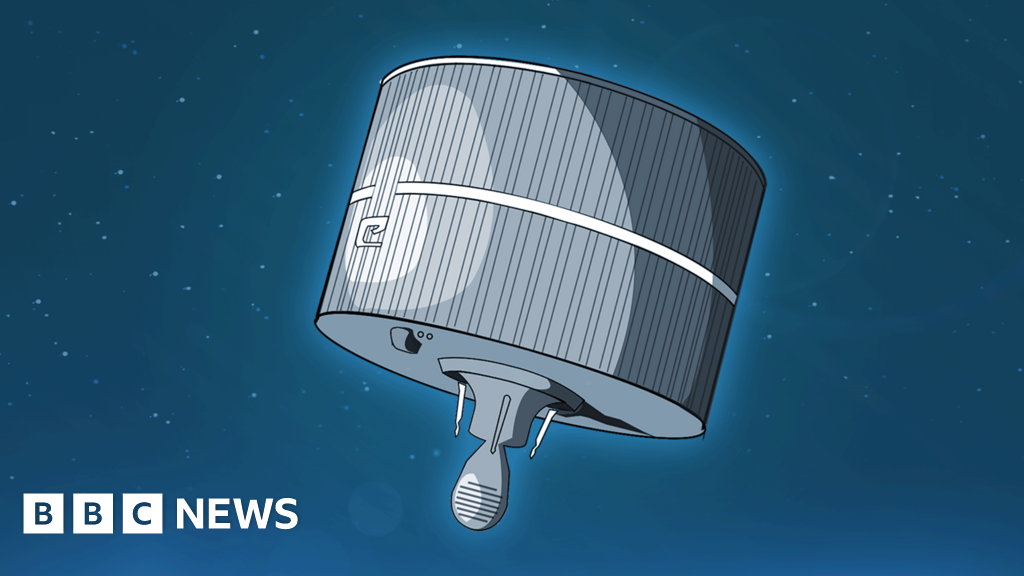
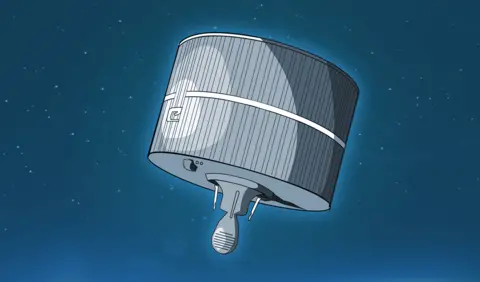 BBC/Gerry Fletcher
BBC/Gerry FletcherSomeone moved the UK’s oldest satellite and there appears to be no record of exactly who, when or why.
Launched in 1969, just a few months after humans first set foot on the Moon, Skynet-1A was put high above Africa’s east coast to relay communications for British forces.
When the spacecraft ceased working a few years later, gravity might have been expected to pull it even further to the east, out over the Indian Ocean.
But today, curiously, Skynet-1A is actually half a planet away, in a position 22,369 miles (36,000km) above the Americas.
Orbital mechanics mean it’s unlikely the half-tonne military spacecraft simply drifted to its current location.
Almost certainly, it was commanded to fire its thrusters in the mid-1970s to take it westwards. The question is who that was and with what authority and purpose?
It’s intriguing that key information about a once vital national security asset can just evaporate. But, fascination aside, you might also reasonably ask why it still matters. After all, we’re talking about some discarded space junk from 50 years ago.
“It’s still relevant because whoever did move Skynet-1A did us few favours,” says space consultant Dr Stuart Eves.
“It’s now in what we call a ‘gravity well’ at 105 degrees West longitude, wandering backwards and forwards like a marble at the bottom of a bowl. And unfortunately this brings it close to other satellite traffic on a regular basis.
“Because it’s dead, the risk is it might bump into something, and because it’s ‘our’ satellite we’re still responsible for it,” he explains.
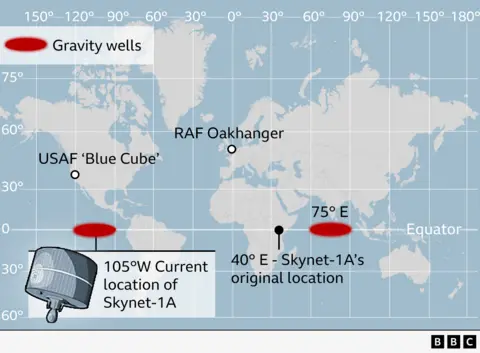 BBC/Gerry Fletcher
BBC/Gerry FletcherDr Eves has looked through old satellite catalogues, the National Archives and spoken to satellite experts worldwide, but he can find no clues to the end-of-life behaviour of Britain’s oldest spacecraft.
It might be tempting to reach for a conspiracy theory or two, not least because it’s hard to hear the name “Skynet” without thinking of the malevolent, self-aware artificial intelligence (AI) system in The Terminator movie franchise.
But there’s no connection other than the name and, in any case, real life is always more prosaic.
What we do know is that Skynet-1A was manufactured in the US by the now defunct Philco Ford aerospace company and put in space by a US Air Force Delta rocket.
“The first Skynet satellite revolutionised UK telecommunications capacity, permitting London to securely communicate with British forces as far away as Singapore. However, from a technological standpoint, Skynet-1A was more American than British since the United States both built and launched it,” remarked Dr Aaron Bateman in a recent paper on the history of the Skynet programme, which is now on its fifth generation.
This view is confirmed by Graham Davison who flew Skynet-1A in the early 70s from its UK operations centre at RAF Oakhanger in Hampshire.
“The Americans originally controlled the satellite in orbit. They tested all of our software against theirs, before then eventually handing over control to the RAF,” the long-retired engineer told me.
“In essence, there was dual control, but when or why Skynet-1A might have been handed back to the Americans, which seems likely – I’m afraid I can’t remember,” says Mr Davison, who is now in his 80s.
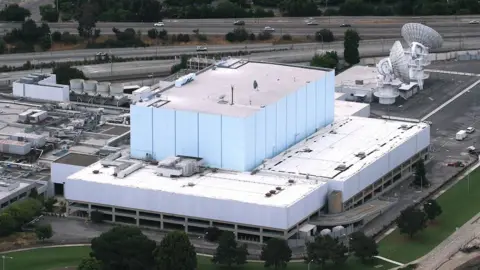 Sunnyvale Heritage Park Museum
Sunnyvale Heritage Park MuseumRachel Hill, a PhD student from University College London, has also been scouring the National Archives.
Her readings have led her to one very reasonable possibility.
“A Skynet team from Oakhanger would go to the USAF satellite facility in Sunnyvale (colloquially known as the Blue Cube) and operate Skynet during ‘Oakout’. This was when control was temporarily transferred to the US while Oakhanger was down for essential maintenance. Perhaps the move could have happened then?” Ms Hill speculated.
The official, though incomplete, logs of Skynet-1A’s status suggest final commanding was left in the hands of the Americans when Oakhanger lost sight of the satellite in June 1977.
But however Skynet-1A then got shifted to its present position, it was ultimately allowed to die in an awkward place when really it should have been put in an “orbital graveyard”.
This refers to a region even higher in the sky where old space junk runs zero risk of running into active telecommunications satellites.
Graveyarding is now standard practice, but back in the 1970s no-one gave much thought to space sustainability.
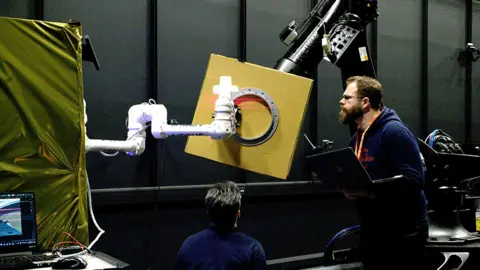 Astroscale
AstroscaleAttitudes have since changed because the space domain is getting congested.
At 105 degrees West longitude, an active satellite might see a piece of junk come within 50km of its position up to four times a day.
That might sound like they’re nowhere near each other, but at the velocities these defunct objects move it’s starting to get a little too close for comfort.
The Ministry of Defence said Skynet-1A was constantly monitored by the UK’s National Space Operations Centre. Other satellite operators are informed if there’s likely to be a particularly close conjunction, in case they need to take evasive action.
 Northrop Grumman
Northrop GrummanUltimately, though, the British government may have to think about removing the old satellite to a safer location.
Technologies are being developed to grab junk left in space.
Already, the UK Space Agency is funding efforts to do this at lower altitudes, and the Americans and the Chinese have shown it’s possible to snare ageing hardware even in the kind of high orbit occupied by Skynet-1A.
“Pieces of space junk are like ticking time bombs,” observed Moriba Jah, a professor of aerospace engineering at the University of Texas at Austin.
“We need to avoid what I call super-spreader events. When these things explode or something collides with them, it generates thousands of pieces of debris that then become a hazard to something else that we care about.”
-

 Science & Environment2 months ago
Science & Environment2 months agoHow to unsnarl a tangle of threads, according to physics
-

 Technology1 month ago
Technology1 month agoIs sharing your smartphone PIN part of a healthy relationship?
-

 Science & Environment2 months ago
Science & Environment2 months agoHyperelastic gel is one of the stretchiest materials known to science
-

 Science & Environment2 months ago
Science & Environment2 months ago‘Running of the bulls’ festival crowds move like charged particles
-

 Technology2 months ago
Technology2 months agoWould-be reality TV contestants ‘not looking real’
-

 Science & Environment1 month ago
Science & Environment1 month agoX-rays reveal half-billion-year-old insect ancestor
-

 Sport1 month ago
Sport1 month agoAaron Ramsdale: Southampton goalkeeper left Arsenal for more game time
-

 Money1 month ago
Money1 month agoWetherspoons issues update on closures – see the full list of five still at risk and 26 gone for good
-

 Science & Environment2 months ago
Science & Environment2 months agoPhysicists have worked out how to melt any material
-

 MMA1 month ago
MMA1 month ago‘Dirt decision’: Conor McGregor, pros react to Jose Aldo’s razor-thin loss at UFC 307
-

 Science & Environment2 months ago
Science & Environment2 months agoMaxwell’s demon charges quantum batteries inside of a quantum computer
-

 Science & Environment2 months ago
Science & Environment2 months agoSunlight-trapping device can generate temperatures over 1000°C
-

 Football1 month ago
Football1 month agoRangers & Celtic ready for first SWPL derby showdown
-

 News1 month ago
News1 month agoWoman who died of cancer ‘was misdiagnosed on phone call with GP’
-

 News1 month ago
News1 month ago‘Blacks for Trump’ and Pennsylvania progressives play for undecided voters
-

 Science & Environment2 months ago
Science & Environment2 months agoLaser helps turn an electron into a coil of mass and charge
-
Business1 month ago
how UniCredit built its Commerzbank stake
-

 Technology1 month ago
Technology1 month agoUkraine is using AI to manage the removal of Russian landmines
-

 Science & Environment2 months ago
Science & Environment2 months agoA new kind of experiment at the Large Hadron Collider could unravel quantum reality
-

 Science & Environment2 months ago
Science & Environment2 months agoLiquid crystals could improve quantum communication devices
-

 Technology1 month ago
Technology1 month agoGmail gets redesigned summary cards with more data & features
-

 Technology1 month ago
Technology1 month agoSamsung Passkeys will work with Samsung’s smart home devices
-

 Science & Environment2 months ago
Science & Environment2 months agoWhy this is a golden age for life to thrive across the universe
-

 Sport1 month ago
Sport1 month agoBoxing: World champion Nick Ball set for Liverpool homecoming against Ronny Rios
-

 Technology1 month ago
Technology1 month agoEpic Games CEO Tim Sweeney renews blast at ‘gatekeeper’ platform owners
-

 Sport1 month ago
Sport1 month ago2024 ICC Women’s T20 World Cup: Pakistan beat Sri Lanka
-

 Science & Environment2 months ago
Science & Environment2 months agoQuantum ‘supersolid’ matter stirred using magnets
-

 Technology1 month ago
Technology1 month agoRussia is building ground-based kamikaze robots out of old hoverboards
-

 News1 month ago
News1 month agoMassive blasts in Beirut after renewed Israeli air strikes
-

 Entertainment1 month ago
Entertainment1 month agoBruce Springsteen endorses Harris, calls Trump “most dangerous candidate for president in my lifetime”
-

 MMA1 month ago
MMA1 month agoDana White’s Contender Series 74 recap, analysis, winner grades
-

 MMA1 month ago
MMA1 month agoPereira vs. Rountree prediction: Champ chases legend status
-

 News1 month ago
News1 month agoNavigating the News Void: Opportunities for Revitalization
-
Business1 month ago
Top shale boss says US ‘unusually vulnerable’ to Middle East oil shock
-

 Technology1 month ago
Technology1 month agoMicrosoft just dropped Drasi, and it could change how we handle big data
-

 MMA1 month ago
MMA1 month ago‘Uncrowned queen’ Kayla Harrison tastes blood, wants UFC title run
-

 Technology1 month ago
Technology1 month agoSingleStore’s BryteFlow acquisition targets data integration
-

 Technology1 month ago
Technology1 month agoMicrophone made of atom-thick graphene could be used in smartphones
-

 Business1 month ago
Business1 month agoWater companies ‘failing to address customers’ concerns’
-

 Technology1 month ago
Technology1 month agoCheck, Remote, and Gusto discuss the future of work at Disrupt 2024
-

 Sport1 month ago
Sport1 month agoWXV1: Canada 21-8 Ireland – Hosts make it two wins from two
-

 News1 month ago
News1 month agoRwanda restricts funeral sizes following outbreak
-

 Science & Environment2 months ago
Science & Environment2 months agoQuantum forces used to automatically assemble tiny device
-

 News2 months ago
News2 months ago▶️ Hamas in the West Bank: Rising Support and Deadly Attacks You Might Not Know About
-

 Technology2 months ago
Technology2 months agoMeta has a major opportunity to win the AI hardware race
-

 Technology1 month ago
Technology1 month agoWhy Machines Learn: A clever primer makes sense of what makes AI possible
-

 TV1 month ago
TV1 month agoসারাদেশে দিনব্যাপী বৃষ্টির পূর্বাভাস; সমুদ্রবন্দরে ৩ নম্বর সংকেত | Weather Today | Jamuna TV
-

 News1 month ago
News1 month agoCornell is about to deport a student over Palestine activism
-

 MMA1 month ago
MMA1 month agoKayla Harrison gets involved in nasty war of words with Julianna Pena and Ketlen Vieira
-

 Business1 month ago
Business1 month agoWhen to tip and when not to tip
-

 News1 month ago
News1 month agoHull KR 10-8 Warrington Wolves – Robins reach first Super League Grand Final
-

 Technology1 month ago
Technology1 month agoLG C4 OLED smart TVs hit record-low prices ahead of Prime Day
-

 Science & Environment2 months ago
Science & Environment2 months agoITER: Is the world’s biggest fusion experiment dead after new delay to 2035?
-

 Science & Environment2 months ago
Science & Environment2 months agoNuclear fusion experiment overcomes two key operating hurdles
-

 Football1 month ago
Football1 month ago'Rangers outclassed and outplayed as Hearts stop rot'
-

 MMA1 month ago
MMA1 month agoPennington vs. Peña pick: Can ex-champ recapture title?
-
Travel1 month ago
World of Hyatt welcomes iconic lifestyle brand in latest partnership
-

 Sport1 month ago
Sport1 month agoShanghai Masters: Jannik Sinner and Carlos Alcaraz win openers
-

 Science & Environment2 months ago
Science & Environment2 months agoA slight curve helps rocks make the biggest splash
-

 Technology1 month ago
Technology1 month agoUniversity examiners fail to spot ChatGPT answers in real-world test
-

 Sport1 month ago
Sport1 month agoPremiership Women’s Rugby: Exeter Chiefs boss unhappy with WXV clash
-

 News1 month ago
News1 month ago▶ Hamas Spent $1B on Tunnels Instead of Investing in a Future for Gaza’s People
-

 Money1 month ago
Money1 month agoTiny clue on edge of £1 coin that makes it worth 2500 times its face value – do you have one lurking in your change?
-

 Sport1 month ago
Sport1 month agoChina Open: Carlos Alcaraz recovers to beat Jannik Sinner in dramatic final
-

 Football1 month ago
Football1 month agoWhy does Prince William support Aston Villa?
-

 Sport1 month ago
Sport1 month agoURC: Munster 23-0 Ospreys – hosts enjoy second win of season
-

 Science & Environment2 months ago
Science & Environment2 months agoNerve fibres in the brain could generate quantum entanglement
-

 Womens Workouts2 months ago
Womens Workouts2 months ago3 Day Full Body Women’s Dumbbell Only Workout
-

 Technology1 month ago
Technology1 month agoMusk faces SEC questions over X takeover
-
Business1 month ago
Italy seeks to raise more windfall taxes from companies
-

 Sport1 month ago
Sport1 month agoSturm Graz: How Austrians ended Red Bull’s title dominance
-

 Sport1 month ago
Sport1 month agoCoco Gauff stages superb comeback to reach China Open final
-

 Sport1 month ago
Sport1 month agoFans say ‘Moyes is joking, right?’ after his bizarre interview about under-fire Man Utd manager Erik ten Hag goes viral
-

 MMA1 month ago
MMA1 month agoHow to watch Salt Lake City title fights, lineup, odds, more
-
Business1 month ago
Bank of England warns of ‘future stress’ from hedge fund bets against US Treasuries
-

 Technology1 month ago
Technology1 month agoQuoroom acquires Investory to scale up its capital-raising platform for startups
-

 MMA1 month ago
MMA1 month ago‘I was fighting on automatic pilot’ at UFC 306
-
Politics1 month ago
‘The night of the living dead’: denial-fuelled Tory conference ends without direction | Conservative conference
-

 TV1 month ago
TV1 month agoTV Patrol Express September 26, 2024
-

 News1 month ago
News1 month agoGerman Car Company Declares Bankruptcy – 200 Employees Lose Their Jobs
-

 News1 month ago
News1 month agoHarry vs Sun publisher: ‘Two obdurate but well-resourced armies’
-
Business1 month ago
The search for Japan’s ‘lost’ art
-

 Sport1 month ago
Sport1 month agoNew Zealand v England in WXV: Black Ferns not ‘invincible’ before game
-

 Sport1 month ago
Sport1 month agoWales fall to second loss of WXV against Italy
-

 Science & Environment2 months ago
Science & Environment2 months agoTime travel sci-fi novel is a rip-roaringly good thought experiment
-

 Science & Environment2 months ago
Science & Environment2 months agoHow to wrap your mind around the real multiverse
-

 Technology4 weeks ago
Technology4 weeks agoNintendo’s latest hardware is not the Switch 2
-
Business1 month ago
DoJ accuses Donald Trump of ‘private criminal effort’ to overturn 2020 election
-

 Technology1 month ago
Technology1 month agoJ.B. Hunt and UP.Labs launch venture lab to build logistics startups
-

 Technology1 month ago
Technology1 month agoAmazon’s Ring just doubled the price of its alarm monitoring service for grandfathered customers
-
Business1 month ago
Sterling slides after Bailey says BoE could be ‘a bit more aggressive’ on rates
-

 Football1 month ago
Football1 month agoFifa to investigate alleged rule breaches by Israel Football Association
-
Business1 month ago
‘Let’s be more normal’ — and rival Tory strategies
-

 Technology1 month ago
Technology1 month agoThe best shows on Max (formerly HBO Max) right now
-

 News1 month ago
News1 month agoTrump returns to Pennsylvania for rally at site of assassination attempt
-

 Sport1 month ago
Sport1 month agoHow India became a Test cricket powerhouse
-

 Sport1 month ago
Sport1 month agoAmerica’s Cup: Great Britain qualify for first time since 1964
-

 News2 months ago
News2 months ago▶️ Media Bias: How They Spin Attack on Hezbollah and Ignore the Reality
-

 MMA1 month ago
MMA1 month agoKetlen Vieira vs. Kayla Harrison pick, start time, odds: UFC 307
-

 Technology1 month ago
Technology1 month agoIf you’ve ever considered smart glasses, this Amazon deal is for you


You must be logged in to post a comment Login